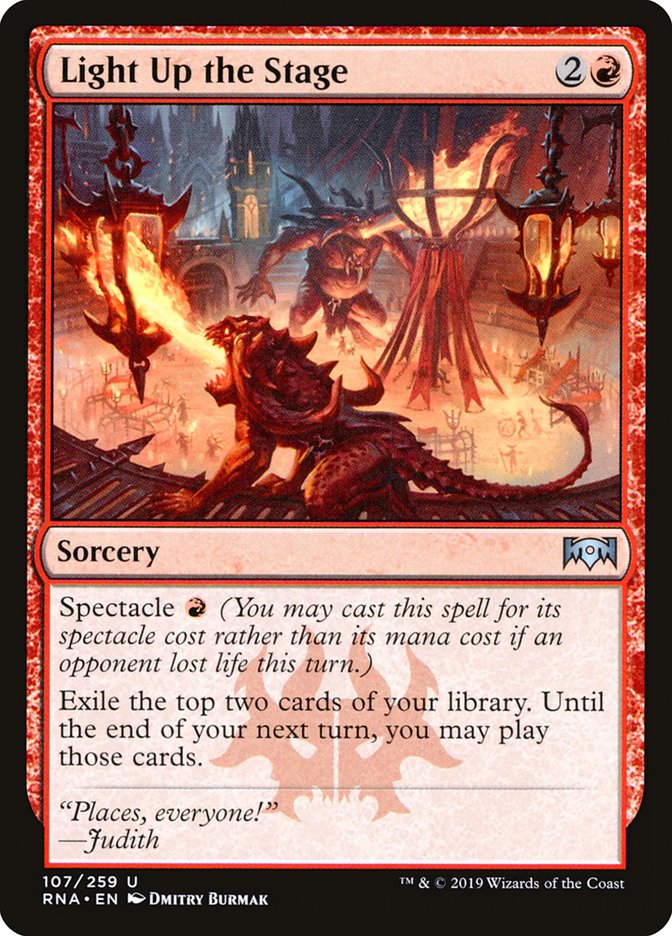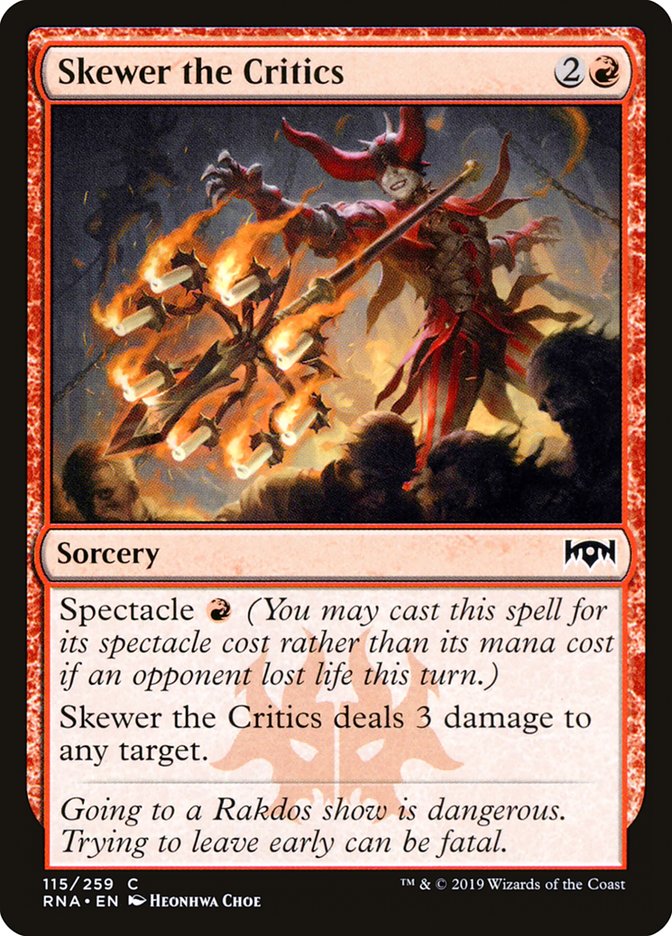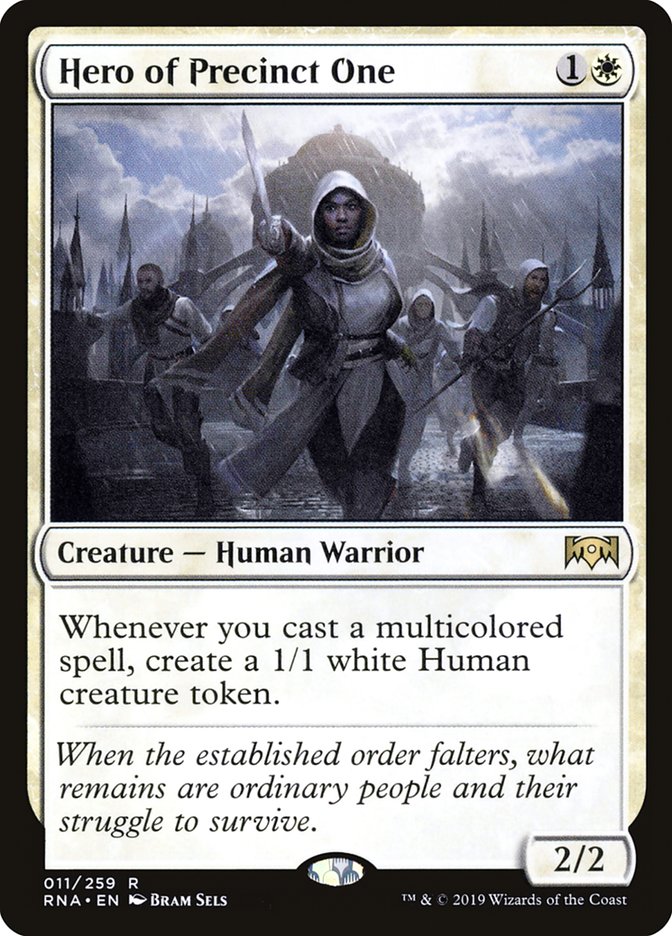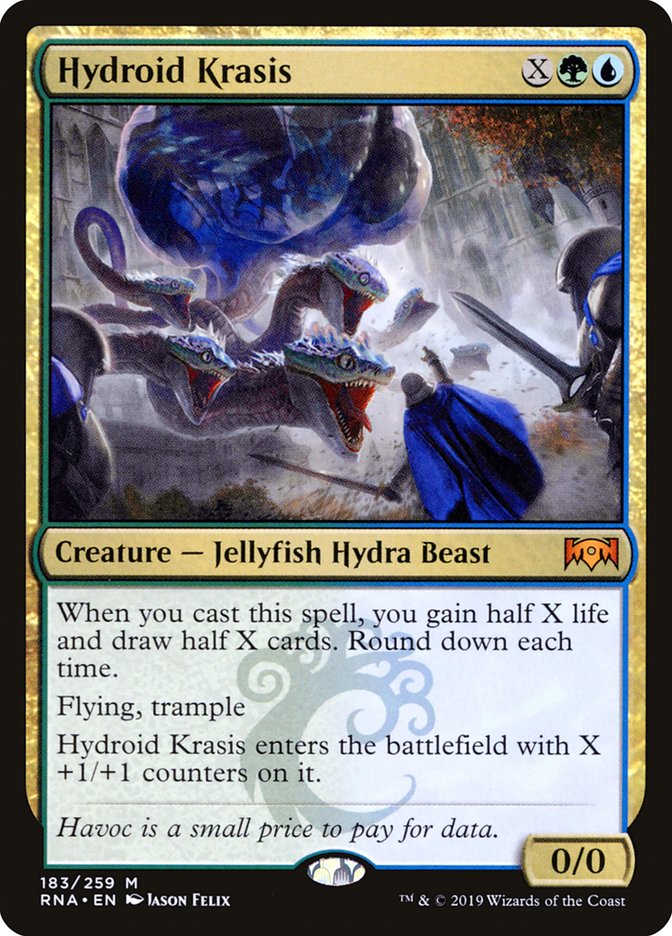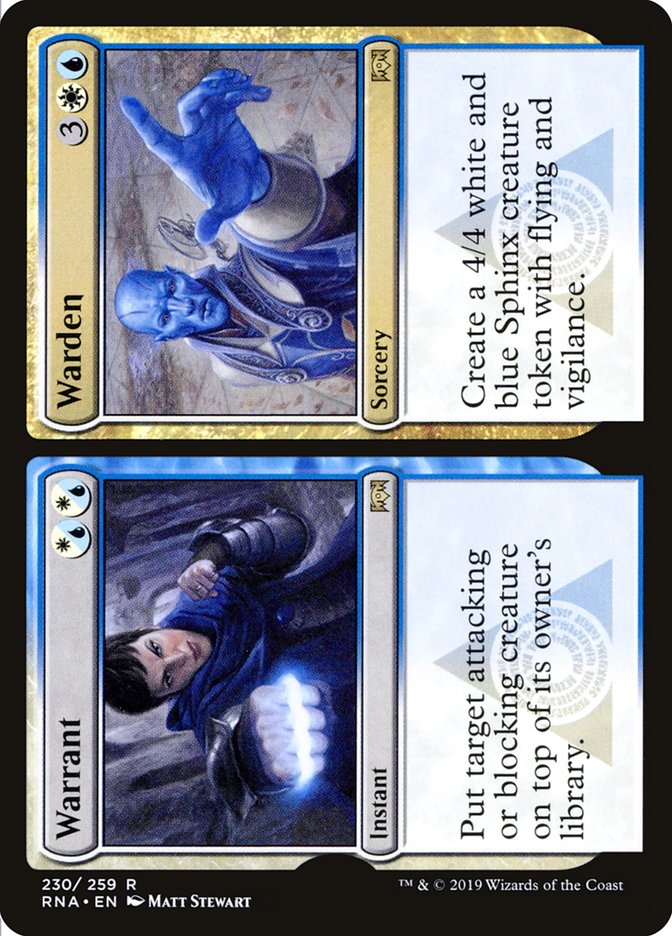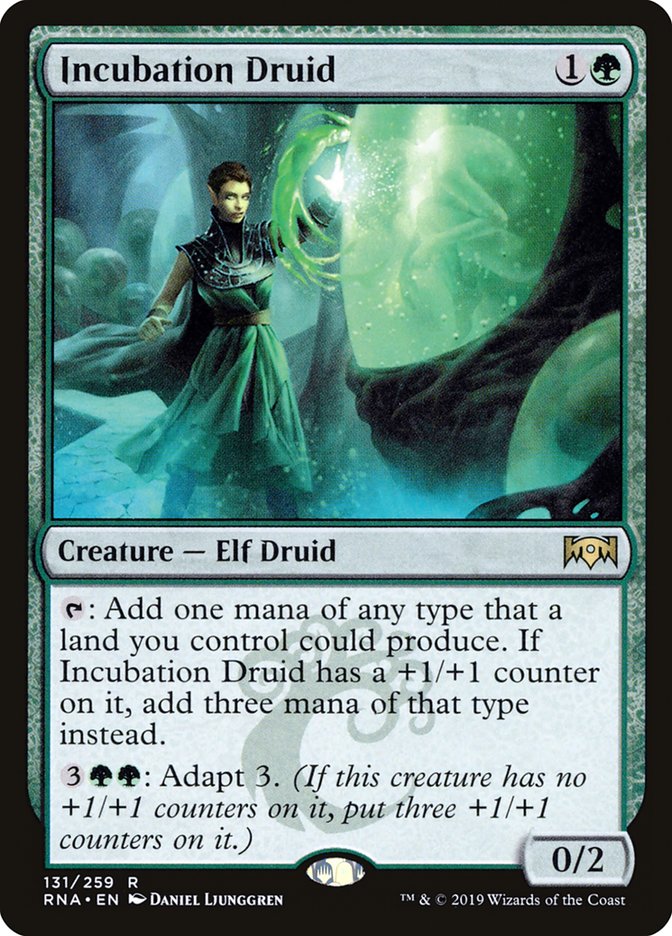Preview season is always a fun time as a content creator because there’s
tons of ground to cover, cards to speculate on, and lists to brew. But it’s
also a time of great uncertainty, because some number of cards will read
well but fail to live up to expectation when actually put through a
rigorous testing process.
At the same time, there are always some cards that, for many reasons, stay
under the radar while the hive mind gushes over the shinier toys in the
chest. Finding some of these cards is a huge advantage in the early weeks
of a new metagame. To that end, I want to highlight some of the cards from Ravnica Allegiance that have risen in my estimation since they
were first previewed, and I believe are poised to make significant noise
this weekend at the SCG Tour stop in Indianapolis.
For each card, I’m going to offer my initial assessment, why I was
skeptical of it, and what I learned after seeing it in actual gameplay
scenarios. From there I’ll look at some potential homes for each card.
Light Up the Stage
Light Up the Stage may seem too obvious at this point, given how prevalent
red decks have been on Arena in the early days of Ravnica Allegiance Standard, but to me this card was far from a
given upon first reading.
The primary issue I had with Light Up the Stage is the numerous timing
restrictions. In order to be good, it was going to have to play like
Thoughtcast, and there are a couple reasons to expect it not to meet such a
high bar.
Firstly, the aggressive red decks that would want an effect like this often
want to cast haste creatures or removal spells to clear the way for its
attacking creatures, at which point casting Light Up the Stage doesn’t have
any immediate impact. If you need to dig for that key removal spell, then
it’s likely the card costs three mana and is not particularly efficient.
After casting Light Up the Stage, you’re under the gun to cast the spells
or play any lands you hit or lose them. If your Shock or Lightning Strike
don’t have a great target, you have to send it upstairs instead of
advancing your battlefield in a meaningful way. Essentially, I saw a lot of
hypothetical scenarios in which you don’t get to utilize the two exiled
cards in a good way and thus, effectively getting fewer than two cards of
value.
In practice, these restrictions are quite easy to mitigate. Light Up the
Stage is often the last card you cast from your hand, leaving plenty of
mana to cast the spells, and with Skewer the Critics, red decks in Standard
have so much burn they don’t mind sending some of it upstairs, especially
if they’re now closer to the critical number of twenty. If you’re flooding
and need action, then the potential added two mana to cast it naturally
isn’t as much of an issue, and if you’re casting it early, it’s probably in
search of a land drop when losing out on a card isn’t a problem because
your hand is already flush with spells.
It’s now clear that Light Up the Stage is pretty darn close to Thoughtcast,
and while that may not mean much to those of who who have only seen the
card be a bit player in Modern Affinity, one-mana Divination is…really
good. I expect red decks of varying flavors to be the most popular in the
room in Indianapolis because they punish bad manabases and have plenty of
card advantage for long games:
Spells (22)
- 4 Shock
- 4 Lightning Strike
- 4 Wizard's Lightning
- 4 Experimental Frenzy
- 4 Light Up the Stage
- 2 Skewer the Critics
Sideboard

There isn’t much to say here since the red decks are pretty
straightforward. You can go lower to the ground with Fanatical Firebrand,
but with so much card advantage it’s nice to have a higher land count,
especially with the sideboard dedicated to morphing into a more controlling
deck in nearly every matchup. These aren’t your normal red decks that you
can dismiss after adding four lifegain cards to your sideboard, and Light
Up the Stage is a big part of that.
That said, we saw a similar early surge of red during the opening weeks of Guilds of Ravnica Standard and eventually figured out how to fight
them, so I wouldn’t be worried that we’re heading for another year
dominated by red decks, just that you have to maintain discipline when
building multi-colored decks full of shocklands or you will be soundly
punished.
Hero of Precinct One
Of the cards on this list, this is the one that I completely dismissed at
first. I don’t even have specific reasons for not liking it, but nothing
jumped out at me as something to build around. Yoman5’s Mardu Aggro deck
spread around social media very quickly last week and demonstrated just how
powerful this card is with the high density of multicolored spells in the
format, in particular Heroic Reinforcements, which gives the token made
from Hero’s trigger haste for a minimum nine-point swing.
Creatures (29)
- 4 Benalish Marshal
- 4 Hunted Witness
- 2 Tajic, Legion's Edge
- 4 Imperious Oligarch
- 3 Judith, the Scourge Diva
- 4 Fireblade Artist
- 4 Hero of Precinct One
- 4 Footlight Fiend
Lands (23)
Spells (8)

After playing with this deck I don’t think the mana is there to make it
work, but Hero of Precinct One was very impressive. Curving it into Judith
into Heroic Reinforcements is a clean turn 4 kill and there are so many
ways to take advantage of the tokens with the various anthem effects and
Fireblade Artist.
Ultimately I think Hero of Precinct One being a card that’s purposefully
designed to play on the multi-colored theme of Ravnica made it easy to
dismiss. It’s not a card that reads as abstractly powerful because it’s
only good in a very specific context, but I should’ve been more receptive
to a cheap card that keys off of the major theme of the set, the same way
you’d look more closely at Sai, Master Thopterist when printed around an
artifact-centric set than otherwise.
With all the shocklands available and the density of multicolored
creatures, there’s no shortage of way to take this card. Ari Lax had an
interesting Naya build in his article yesterday that I liked because I
believe Gruul Spellbreaker is best utilized in a low to the ground
aggressive shell while straight Gruul decks should go bigger for cards like
Skarrgan Hellkite and Ravager Wurm.
The only problem is that these decks are going to be tough to find the
right manabase for, because they need to curve out quickly while finding
three colors of mana on a relatively low land count. As a result, Hero of
Precinct One may be a dud on week one, but will emerge once the best home
for it is found and tuned. For now this card is a high risk, high reward
for those daring enough to work on it.
Hydroid Krasis
Six and a half years ago there was a card with X in its mana cost that I
looked at, assumed it would be a nice singleton in decks playing a long
game, but not much more than that. That card was Sphinx’s Revelation, which
went on to largely define Standard for two years, as well as dominate Block
Constructed for Return to Ravnica. The lifegain it provided
offered enough of a buffer that the first copy, even when cast for a small
number, chained into the second, which, if necessary, chained into a third
that was game-ending.
Hydroid Krasis isn’t on the level of Sphinx’s Revelation, but it’s closer
than you think and operates on a similar principle. In exchange for the raw
draw power of Revelation, Krasis creates a sizable body, and the
combination of immediate impact and card advantage is always a winner in
Standard (see Courser of Kruphix, Tireless Tracker, Collected Company for
more examples).
And more importantly, Hydroid Krasis is reasonable to cast from X=2 on. Few
would put a 2/2 with flying and trample that draws a card and gains a life
in their deck, but the option to cast it when you don’t have another
options is great, especially when Hydroid Krasis is likely taking the place
of more expensive spells in your curve. It’s not going to be stuck in your
hand and if the game goes long, it’s going to be the best card off the top,
even in the face of counterspells since the card draw and lifegain come
from a triggered ability upon casting the spell, not it entering the
battlefield.
Hydroid Krasis is a great payoff for ramp decks, like the one Todd Anderson
played in
this recent episode of VS Live!
, and is also a great splash for value-minded Golgari decks, like this one
from the first set of MTGO lists:
Creatures (26)
- 4 Llanowar Elves
- 2 Carnage Tyrant
- 4 Wildgrowth Walker
- 4 Merfolk Branchwalker
- 1 Seekers' Squire
- 4 Jadelight Ranger
- 2 Ravenous Chupacabra
- 2 Midnight Reaper
- 3 Hydroid Krasis
Planeswalkers (3)
Lands (24)
Spells (7)
Sideboard

Touching blue here in an otherwise typical Golgari shell gives you access
to another great piece of card advantage that fills in any spot on the
curve, so this list isn’t appreciably clunkier than previous Golgari decks
but much better drawing off the top. Hydroid Krasis is a great card to dig
for with explore effects late in the game or rebuy with Memorial to Folly
and Find, and the blue splash gives you access to Negate in the sideboard
for control and Wilderness Reclamation decks if you want it.
Kids, it’s a simple as this: Green decks are great at making mana with
Llanowar Elves, Incubation Druid, and explore creatures, and Hydroid Krasis
is great at using excess mana. And when two Magic cards love each other
very much, they go to the Breeding Pool and a baby is born.
Warrant
Solid removal spells are often overlooked because they aren’t particularly
flashy, but in the modern era of Standard, finding the right removal
package for a given metagame is very important, especially for reactive
decks, so understanding the strengths and weaknesses of removal spells is
important.
With Warrant, the obvious comparison is to Azorius Charm, which was a
staple for its entire time in Standard. The removal effect is quite
powerful, but it’s easy to forget how important the option to draw a card
was for Azorius Charm. It meant they weren’t a liability in control
mirrors, in fact the exact opposite since they helped you make land drops,
which is very important in those matchups. Even against creature decks,
sometimes the removal ability wasn’t relevant and you needed to dig for
Sphinx’s Revelation of Supreme Verdict.
Warrant doesn’t do those things, and the Warden half isn’t particularly
effective, often just giving your opponent a target for otherwise dead
removal. It’s something, but not on par with cycling, so I wasn’t sold on
the card.
However, this line of thinking falls into the trap of comparing a card to a
standard that it doesn’t need to meet. Warrant is being played in 2019, not
2013, so comparing it to cards like Seal Away and Baffling End is more
appropriate, and in that light the card looks much better.
Firstly, it’s not an enchantment, so it’s not going to die to Mortify or
Knight of Autumn or the multitude of other disenchant effects in Standard
right now, all of which are going to see plenty of play with so many juicy
targets for them, like Wilderness Reclamation and Experimental Frenzy. It
also handles vigilance creatures, making it better against Aurelia,
Exemplar of Justice and History of Benalia.
And lastly, while putting a creature on the top of its owner’s library may
seem worse than removing it permanently, against cheap creatures it’s often
better. Aggro decks don’t want to spend their turns 3, 4, and 5 re-casting
their early plays, and doing so often plays into sweepers. Forcing them
into a suboptimal play because they missed a land drop or didn’t find their
more powerful cards gives you, as a control deck, more time to set up for
your game-ending cards.
comparing it to cards like Seal Away and Baffling End is more appropriate,
and in that light the card looks much better.
Where Warrant suffers relative to other options is against utility
creatures, mainly mana creatures like Llanowar Elves and Incubation Druid,
but most control players are happy to see those cards because they can
focus their answers on the big threats with little threat of dying from the
cheap cards. But if your opponents are ramping into difficult to answer
cards like Carnage Tyrant or Hydroid Krasis, the mana creatures are more
dangerous.
Of course, for an aggressive deck, Warrant isn’t a great option because it
doesn’t clear away a blocker, so I’d stick to Warrant in reactive control
decks, but it’ll be a very good card in those decks, just not the
everpresent staple that Azorius Charm was.
Incubation Druid
Incubation Druid saw plenty of hype from the moment it was revealed, so it
may seem strange to see it on this list, but I wasn’t particularly high on
it. There’s a lot of cheap removal for it right now, so it’s hard to build
a deck that both consistently takes advantage of the acceleration while
operating smoothly when it dies. There are plenty of gimmicky ways to put
counters on it to accelerate quickly, but I’m not in the business of
putting Stony Strength in my decks.
The missing element here is its power alongside Llanowar Elves. The ability
to land a five-drop on turn 3 has been a winning formula before in
Standard, back in the days of Sylvan Caryatid, and there are plenty of
great five-drops to accelerate into. Skarrgan Hellkite, Lyra Dawnbringer,
Vivien Reid, and Trostani Discordant are all solid options, and I’m sure
the list doesn’t end there. With a blue splash, you get access to Hydroid
Krasis and Negate to help against control, though Carnage Tyrant may be
enough.
In this light, Incubation Druid’s extra text is mostly a distraction,
though it can synergize nicely with already powerful cards like Hadana’s
Climb and Ajani, Adversary of Tyrants. Playing it as a second mana creature
in decks trying to go big is already promising, and Incubation Druid is
superior to Druid of the Cowl in this respect because it can fix your mana
for double-colored cards and in the lategame adapt into a real threat or
supercharge any mana sinks you might have in these aggressively-slanted
midrange decks.
In fact, I’d be building my Gruul decks in these directions, ignoring more
aggressively slanted creatures like Gruul Spellbreaker in favor of going
big:
Creatures (25)
- 4 Llanowar Elves
- 2 Rekindling Phoenix
- 4 Thrashing Brontodon
- 1 District Guide
- 2 Ravager Wurm
- 4 Skarrgan Hellkite
- 4 Growth-Chamber Guardian
- 4 Incubation Druid
Planeswalkers (1)
Lands (24)
Spells (10)
Sideboard

I went conservative on the mana with only two copies of Rekindling Phoenix
so we can get more early green for mana creatures, but I also like loading
up on Thrash because Threat fills the four slot in the curve that in the
ideal case we’ll skip over anyway.
I could also see the curve going a little higher since the deck has lots of
mana sources, but Growth-Chamber Guardian and Skarrgan Hellkite are natural
mana sinks, and I don’t want to have a hand of expensive cards stranded if
the mana creatures die.
This base could splash blue for Hydroid Krasis and Negate if control is of
particular concern, or white for Knight of Autumn, Shalai, Voice of Plenty,
and Lyra Dawnbringer to help against aggressive decks, so feel free to play
around with it. Just don’t go too far out of your way to cheat +1/+1
counters onto Incubation Druid, which will add unneeded inconsistency. The
card is perfectly fine as a supplementary mana creature with high enough
upside to be worth the increased risk of flooding.
Evaluating cards is far from a science, and even those of us who have been
doing it for years miss cards that in hindsight look like obvious
powerhouses. We still haven’t seen Ravnica Allegiance in a
high-level tournament setting so there’s still no guarantees, but if you
were overlooking any of these cards, I’d take another look.


